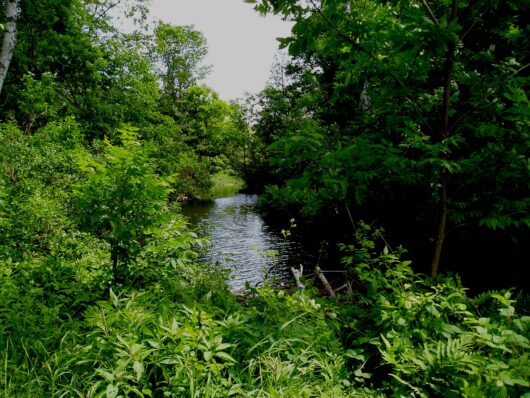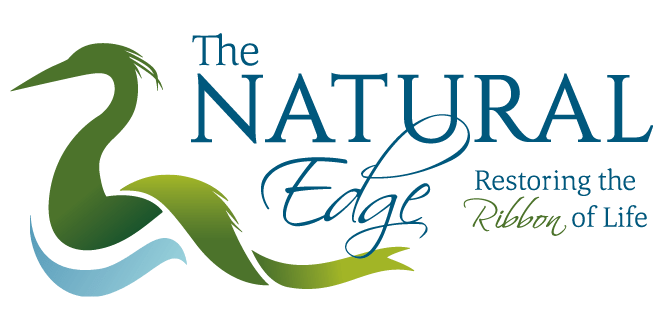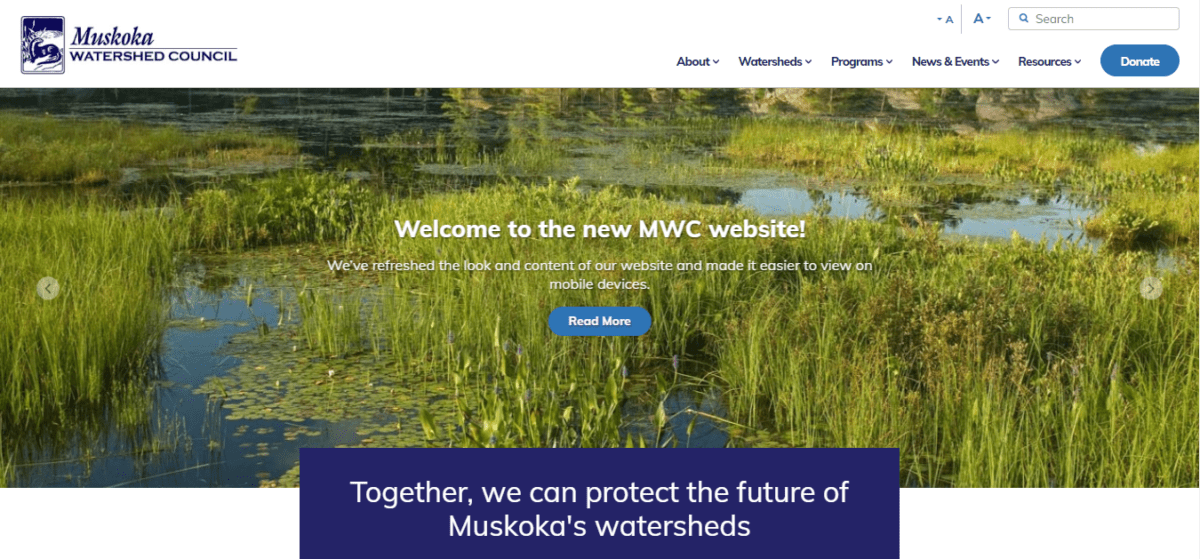Monthly Archives: September 2020
Does your shoreline have a Natural Edge?
By Rebecca Willison and Rebecca Krawczyk.

We are naturally attracted to aesthetic places and clean water—and so are the creatures we share this land and water with. The riparian zone (where water meets land) and the littoral zone (the submerged area of shoreline where sunlight still penetrates through to the lake bottom) is also called the ‘Ribbon of Life’. 70% of all of Ontario’s wildlife depends on shorelines for many aspects of their survival—and this ribbon is key. They use these shoreline areas to find food, water, shelter, to reproduce and raise their young, and to sunbathe. As waterfront landowners, and stewards of our shorelines, we need to keep these creatures and their needs in mind as well as ours.

The Natural Edge Shoreline Re-naturalization program was developed by Watersheds Canada to provide waterfront property owners with the resources needed to create and maintain a healthy waterfront. With funding support from the Canadian Wildlife Federation and the Love Your Lake program, The Natural Edge program compliments the many stewardship activities already being undertaken by lake associations and individual Muskokans.
The benefits of having a natural shoreline are well documented. For instance,
- plant roots retain the earth and soil on which we walk to get to the lake to go for a swim;
- shoreline plantings maintain and improve water quality by reducing the incidences of soil erosion and sedimentation, therefore protecting fish habitat;
- waterfront vegetation slows water flow over land and filters over-land pollutants through roots and shoots;
- plant branches and blades disperse water runoff and absorb excess nutrients, such as phosphorous, which can produce algae blooms in waterways; and
- shoreline plants provide oxygen to aquatic ecosystems.
However, getting that natural shoreline if you don’t have one already can seem like a daunting task. That’s where The Natural Edge comes in. We can guide you step by step through the process, beginning with a free site visit where we discuss issues you would like to address on your property (i.e. deer, geese or beaver, invasive species, erosion) as well as a vision for what you would like to accomplish. We take photos and measurements and can develop a shoreline planting plan during the site visit that can act as a roadmap for your re-naturalization project.
We can also help you get your project started with the Shoreline Re-naturalization Starter Kit! For just $250, the Starter Kit includes 50 native plants of your choosing (subject to availability), coconut fibre mats, mulch, tree guards and booklets on how to properly install and maintain your plantings. We supply the plants and materials, and you supply the labour!
Learn more about the Natural Edge program and book a site visit at https://www.muskokawatershed.org/programs/the-natural-edge/.
MWC Launches a New Website!

Muskoka Watershed Council (MWC) is excited to unveil its newly redesigned website! The website has a new contemporary look and streamlined structure, providing an enhanced experience for visitors on both computer and mobile devices. This redesign will make it easier for visitors to find the great watershed health resources MWC is known for. The new website has also been designed to meet AODA Level AA 2021 standards for accessibility.
The information contained on the website is presented in a concise format that will be available for years to come. From an administrative view, the website communicates About our Mission and Objectives; Council and Committee members; and publishes all Agendas and Minutes from our monthly general council meetings. It also outlines the Watersheds and Subwatersheds in Muskoka to allow visitors to view the concerns specific to them.
MWC’s Programs are presented clearly, with a message to encourage visitors to get involved. The News & Events section includes the ‘Downstream’ newsletters, upcoming meeting dates, the Watershed Blog and information regarding the biennial Muskoka Stewardship Conference to keep everyone up to date.
Last but not least, the largest content of the website is represented by the Resources section, where visitors will find valuable information on Climate Change and Best Practices. As well, the Report Card, Living in Cottage Country Handbook and MWC’s Position Papers provide information that can be utilized from property owners up to/and including local and provincial governments.
MWC staff and volunteers have been working with Reeder Web Design in Huntsville to update the look and content of MWC’s website over the past several months and we know you will love the results! Please visit the new website at www.muskokawatershed.org and let us know what you think by emailing [email protected].
